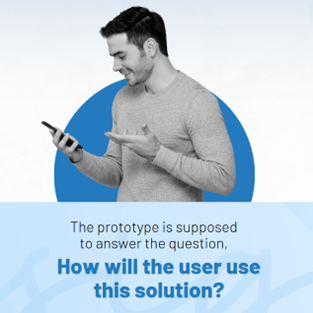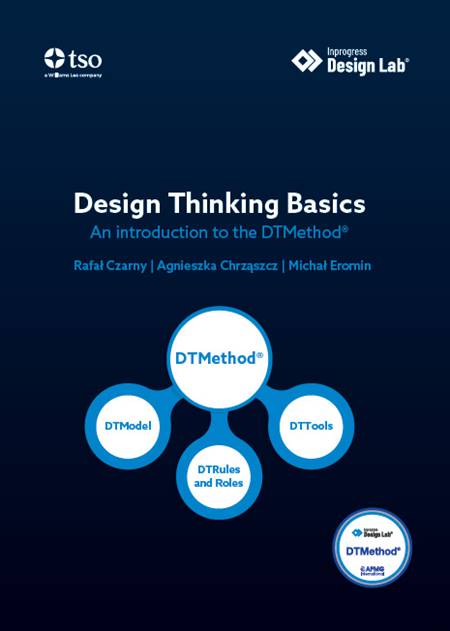There are many aspects to consider when designing a new service for customers, but what are the most important? The choice of technology? Lowest price? Design considerations? Or is it the quality of customer service?
Human-centred design and design thinking focus on creating solutions (products, services and processes) that meet the needs of users, on the basis that customers will respond more positively to services that are useful to them, satisfy their needs and provide a positive experience.
Think about a new solution. What will you and your customers really value?
- A service that employs the latest technology available or one that is intuitive and fun to use?
- One that is cheap to buy but unfriendly and of questionable utility, or more expensive but fully functional?
- One that’s attractive and superficially engaging or useful and practical?
I am not suggesting that technology, design and price do not matter. But I am saying that usability and a positive user experience are more important. We shouldn’t aim to provide a service that our customers want but rather one that they need.
How then do we go about creating a solution that is really relevant to people? Use design thinking!
First: understand your users
Find out from people what they want to achieve by using the service. What results do they want and why? What is essential to them and what is just nice to have? What do they expect from the solution and why do they want this?
The methods most often used in this step are surveys, interviews and observations. Although interviews may give us clues about the solution itself (e.g. ‘I would like the shop to be open 24 hours a day’), we may need to dig deeper to find out why users would want this (e.g. ‘Because I want to be reassured that I will be able to get important products such as baby nappies at any time of the day or night if needed’). Satisfying this need for ‘peace of mind’ might be achievable in a more efficient or cost-effective way. In the example, a dedicated online service with courier-supplier products might fit the bill better than a shop open 24/7.
In other words, we need to be satisfied that we are applying the right solution to the right requirement.
Second: redefine the problem
The problem the organisation wants to solve needs to be run through the ‘filter’ of identified user needs. If the challenge is to ‘increase the number of users on our mobile network’, then consider how this is to be done. If stakeholder research has shown that users find it time-consuming, difficult and unpleasant to switch operators, our focus could be to make it easier for users to port their numbers from another phone network to ours.
Third: stimulate creativity
Those working to solve a problem should generate as large a pool of ideas as possible that respond to the redefined problem. The more ideas, the more likely a good solution will emerge.

Fourth: prototype
Prototyping in design thinking involves the creation of a very simple, even schematic, visualisation that show how a solution is supposed to work. The prototype is supposed to answer the question, ‘how will the user use this solution?’ Prototypes can, for example, be:
- a cartoon depicting the user’s interaction with the solution;
- rough images of the app screens (generated in a design package or even hand drawn) outlining the key functions of the solution. It is a good idea in such a prototype to show what the start screen of the app will look like, the journey through a series of related screens, what information will be displayed, and what options the user will have;
- more detailed constructions that depict a space or a product. This type of prototyping allows an even deeper interaction between the potential user and the prototype.

Fifth: test
Prototypes should be shown to users to get feedback. This feedback can then be used to improve the vision of the product, process or service, so that it is better suited to their needs.
Testing is difficult for designers and it is never easy to receive critical feedback. It is therefore important to be as open as possible to what stakeholders have to say, to take notes of the feedback and not to get into heated debate with the testers during the feedback phase.
Remember, in the design thinking process, if the design team receives critical feedback, it is a success for the organisation. Why? Because it seemed like something was a good solution (because, after all, the designers had prototyped it for some reason). And if it seemed good, the work could have been outsourced to the project management team. And if this had happened the organisation would have spent a lot of money on producing an unfavourable solution.
Critical feedback in the design thinking process not only protects against expense but will allow something beneficial to be designed for users, a sound base on which project teams can build.
Sixth: iterate
During the design thinking process, the team works iteratively. Frequent communication with stakeholders helps to generate a vision of what is useful and necessary and provides a positive user experience.
At this point, it is important to emphasise that successive iterations produce a better solution. Iteration is not failure, but an opportunity to learn and produce something better.
The outcome of the design thinking process is a vision of the solution. This vision takes the form of a prototype, which indicates the most important functionalities that the solution should display. Once the vision is clear, the next step is to produce this solution, e.g. by starting a project management process.
Applying design thinking
To apply design thinking, the DTMethod methodology can be used. DTMethod was created so that anyone, regardless of experience, can apply design thinking to their practice. DTMethod guides users through the entire design thinking process, precisely defining the roles and responsibilities of the members of the design team and the rules to be followed to increase the chances of success.
In addition, it identifies specific tools that are worth using in each phase of the process. Studies show that by using design thinking before a project, solutions developed in projects are delivered to the market faster and users are more likely to use them than when design thinking has not been applied. This significantly increases ROI and revenue (Forrester, The Total Economic Impact™ Of IBM’s Design Thinking Practice. How IBM Drives Client Value And Measurable Outcomes With Its Design Thinking Framework, 2018).
Want to learn more about design thinking and the DTMethod?
- Visit dtmethod.com
- Pick up a copy of Design Thinking Basics from the itSMF UK bookstore
- Join the free itSMF UK webinar on 12 September.


Rafal Czarny
Rafał Czarny is Director of Innovation and Development at Inprogress Design Lab. He is also a facilitator, designer, trainer, and lead author of DTMethod, a methodology that helps apply design thinking in organisations.


